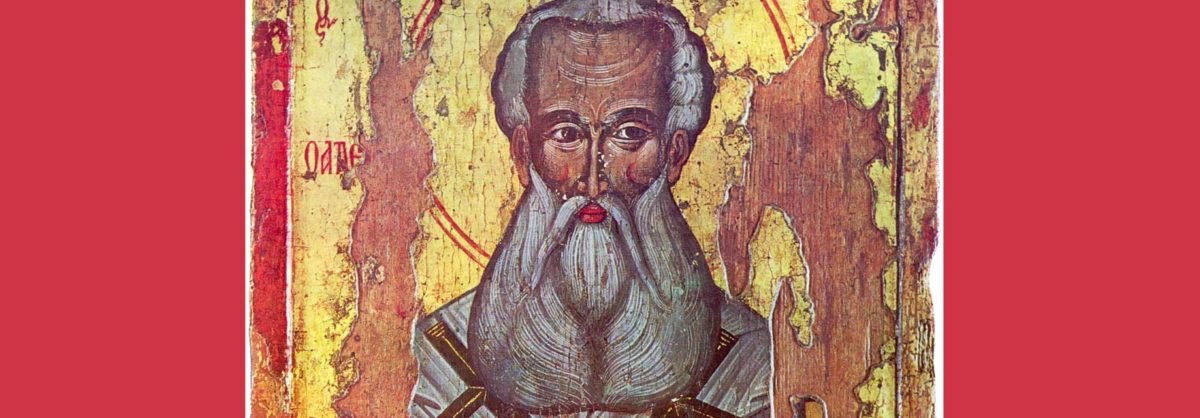
Defending the Divine: St. Athanasius' Battle for the Incarnation of Christ
In his work "On the Incarnation of the Word," St. Athanasius set out to convince his readers of the veracity of Jesus' incarnation. He sought to convey this using accurate information and unambiguous facts. In Christianity, the process and the reality that Jesus dwelt on earth in a human form are referred to as "incarnation." It is important to remember that despite being human, Christ did not sin. Athanasius is explaining and defending the incarnation of Christ to skeptics who are unable to accept his reasoning. The word "incarnation" has Latin roots that date back to the fourth century. The prefix "in" means "in," and the suffix "caro" means "in the flesh." "In the flesh" was the definition of "incarnation" back then. Jesus, God's only Son, was sent to Earth as a sin offering for all people.
Religion is an age-old tool used by people all over the world to communicate their ideas and provide light on some of the mysteries surrounding life in the past, the present, and the hereafter. However, understanding it is not that straightforward. It has changed and developed over time into beliefs and customs that are entirely distinct from what was previously understood and taught. When Jesus Christ, the Son of God, took on human form here on Earth, it resulted in one of the most significant shifts in religious history ever. This not only brought about change, but it also led to a lot of disagreements and uncertainty. Saint Athanasius addresses some of these problems and heresies in his work On the Incarnation by offering refuting evidence that demonstrates Jesus' complete humanity and divinity. The audience that Athanasius was speaking to was mostly hostile to the idea of God's existence. As a result, he takes a severe and protective stance with them and is determined to lay forth the details of Christ's incarnation. Additionally, he sought to demonstrate and persuade these skeptics from the fourth century that this occurrence was important in demonstrating the love of God. The incarnation is extremely significant since God provided His Son and made Him human. These outward behaviors were evidence of Jesus' actual human existence. Athanasius penned a letter to clarify Christ's unwavering love for His sinful followers since Christ offered the ultimate sacrifice by giving his life for others. The facts supporting this are provided in this book in a clear, passionate, and supported manner.
St. Athanasius vehemently maintained the true view of the Church that the Father and Christ are of one essence or nature at the Council of Nicea in 325 A.D. Both the Father and Jesus Christ are God. The Second Person of the Holy Trinity (Jesus Christ) is generated from the Father in eternity, not formed at any point in time, the Church publicly declared at the Council, condemning Arius. Christ and the Father are "of the same substance". Christ is therefore entirely God, having the same divine nature as the Father and being co-equal with him. Both real God and true man, Jesus Christ. Athanasius carried on the crusade against Arianism after becoming the bishop of Alexandria. At first, it appeared as though Arianism would be victorious and the struggle would be straightforward. However, this did not turn out to be the case. The Council of Tyre was summoned, and the Emperor Constantine banished Athanasius to northern Gaul for a number of reasons that are still not clear. This was to be the start of a string of journeys and exiles evoking St. Paul's life.
Athanasius was reinstated as bishop by Constantine's son after his death. However, this only lasted for a year when he was again overthrown by a group of arian bishops. Athanasius brought his argument to Rome, where Pope Julius I convened a synod to discuss it and other pertinent issues. Athanasius was banished five times for upholding the concept of Christ's deity. He had ten years of comparatively quiet time in his life where he studied, wrote, and promoted the monastic ideal of the Christian life, to which he was deeply committed. Nearly all of his historical and theological writings are combative and attack every facet of Arianism.
While serving as the bishop of Alexandria, Athanasius faced several difficulties. He was granted the grace to persevere in the face of what may have at times seemed overwhelming resistance. Athanasius really embraced his role as bishop. Despite the expense to himself, he stood up for the genuine religion in the interest of his flock. We are still being called in the modern world to uphold our faith in all circumstances.
Sources Cited
“St. Athanasius.” Encyclopædia Britannica, Encyclopædia Britannica, Inc., https://www.britannica.com/biography/Saint-Athanasius.
Media, Franciscan. “Saint Athanasius.” Franciscan Media, 2 May 2021, https://www.franciscanmedia.org/saint-of-the-day/saint-athanasius.
Fields, Lisa. “Athanasius of Alexandria: A Champion for Christ and His Word.” Jude 3 Project, Jude 3 Project, 1 Apr. 2021, https://jude3project.org/blog/athanasius.
Post a comment